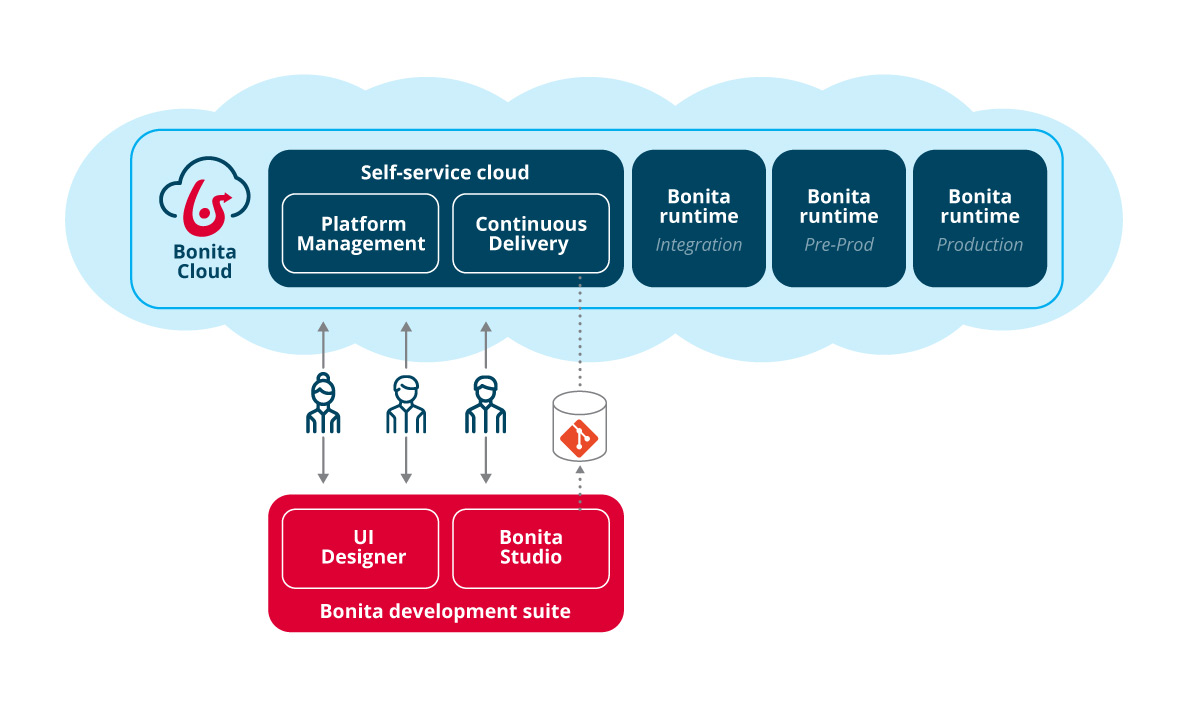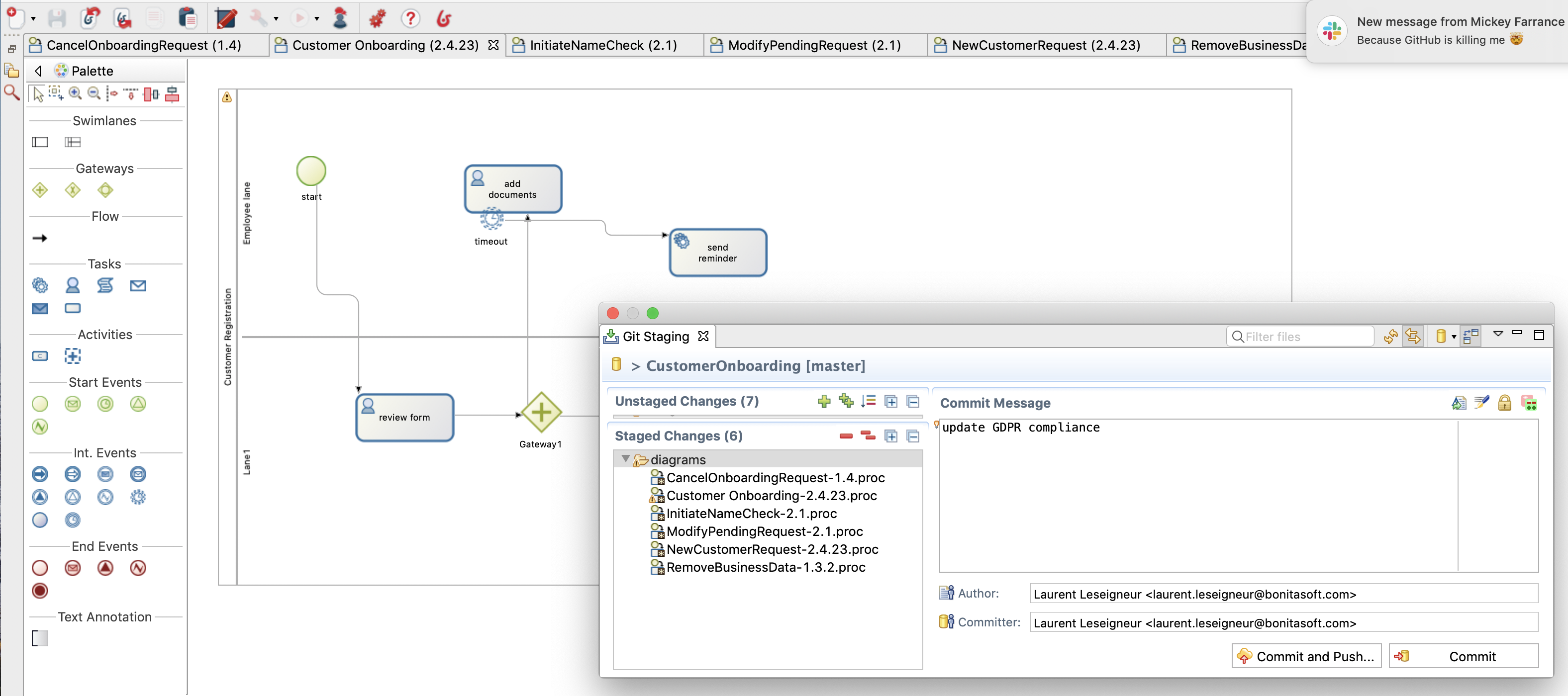Bonita Cloud Offers Fast, Fail-Safe Way To Bring Process Apps, Automation to the Cloud
Bonitasoft has launched its first cloud version fully managed and operated by the company. IDN explores Bonita Cloud’s fast and fail-safe approach to bringing process apps to the cloud with CEO Miguel Valdes Faura.
by Vance McCarthy
Tags: AWS, Bonitasoft, CI/CD, cloud, low-code, NoOps, process apps, RPA,

CEO

"Bigger organizations don’t want to deal with cloud [operations] anymore. They want to just focus on their apps and have someone else operating for them."
 Modern Application Development for Digital Business Success
Modern Application Development for Digital Business SuccessBonitasoft is making its long-time digital process automation platform available in a managed cloud edition.
Bonita Cloud was engineered to provide customers a faster and fail-safe way to take their DPA and BPM apps to the cloud.
Bonita Cloud offers complete automation of deployment, monitoring and management of both apps and the infrastructure they run on, Bonitasoft CEO Miguel Valdes Faura told IDN. It is powered by a combination of expert humans and machine learning to ensure optimal performance.
As a result, Bonita Cloud aims to let operators avoid bottlenecks, improve efficiency, and even predict issues with performance and inefficient processes, he added.
“Bonita Cloud is the first cloud version managed and operated by Bonitasoft,” Faura told IDN. “Customers have been asking us for that.” That said, Bonita Cloud is not the company’s first foray into the cloud. Over the last three years, Bonitasoft has offered a hosted version that customers can run with AWS, Azure and Google.
“With this expertise, we are now launching our own managed cloud solution because customers have been asking for it,” he added.
When Faura says ‘managed cloud,' he means it literally. With Bonita Cloud, Bonitasoft technical staff offer customers hands-on management of operations to more quickly detect and resolve any customer issues that arise.
“We’ve heard from bigger organizations that they don’t want to deal with cloud ops [operations] anymore. They want to just focus on their apps and have someone else operating for them,” Faura said.
“Some customers even say to us, ‘Can you help us with NoOps paradigm?’ That’s a major reason for us launching our managed cloud offering.”
[NoOps (or “no operations”) is the concept that an IT environment can become so automated and abstracted from the underlying infrastructure that there is no need for a dedicated team to manage software in-house, according to WhatIs.com]
Bonita Cloud’s ‘NoOps’ Approach to a Managed Service
Traditionally, customers with a managed cloud service may need to call and ask support to reproduce an error, as the first step to resolving it, Faura told IDN. The Bonita Cloud model avoids lots of this.
“We’re going to have a full team with full information right there. We think we’ll know better than a new customer how to get their apps and cloud [instance] working well – to configure properly and scale automatically. It’s because we know exactly how to do [these tasks] with the Bonita Cloud, we’ll be able to be more reactive,” he said.
“Generally, a bug will be an issue with the way you developed [an app] or how something is not working in the cloud,” Faura said. However, finding the precise issue – and fixing it without breaking something else – can be an aggravating and time-consuming task. “Bonita Cloud staff work hands-on with customers directly to identify and resolve the issue as quickly as possible,” Faura said. This means IT admins won't need to pour through screens or log files to pinpoint the issue, he added.
Bonita Cloud also pays attention to another important aspect of ops -- performance. The latest version of the asynchronous Bonita process engine has demonstrated a 10x performance boost for distributed apps that rely on complex interactions with external systems. [The Bonita engine is now available as an independent service embeddable in an application and it integrates with Spring Boot.]

Beyond ops, Bonita Cloud’s managed service is built to help people develop and deploy apps to the cloud faster. Notably, Bonita Cloud comes with a full suite of tools and capabilities for CI, CD, testing, pre-provisioning, launch, monitoring and management. It also offers auto-configuration and auto-scale.
In specific, Bonita Cloud embraces a productive DevOps approach with popular technologies, including Docker, Kubernetes (for container management), Ansible (for provisioning), Jenkins (for CI) and more. “We’ve worked with all our tooling so you can do continuous delivery of apps that you build and run on Bonita Cloud,”
Much of this attention to support commonly used (and open source) tools arises from Bonita Cloud’s intent to increase collaboration across the lifecycle – between developer teams, testing and pre-provisioning groups, Faura said.
To help keep all members on the same page, “everything is stored in Git. Every modification is put into a Git repository,” he noted.
Faura shared an example of the pipeline users can use with Bonita Cloud.
Once a developer pushes the button on their coded app, it moves to Bonita Cloud’s testing and pre-production environments.
“For provisioning, we believe in freedom and flexibility We provide [popular] powerful tools. But we are not forcing you to do it a certain way. You can always follow your own methodology,” Faura told IDN. As an example, he noted that Bonita Cloud uses Jenkins by default, but users can re-configure to the methods and tools they are using.
Bonita Cloud’s attention to collaboration even helps skilled developers and less-technical business users work better together.
“In the past Bonitasoft focused on personal developers. We’re expanding now to promote collaboration with less technical users and less technical tools,” Faura said. On that score, Bonita Cloud sports new low-code capabilities to support more functions for UI design, process flows and even creating valid contracts. “In the past, when you were building a UI, the developer needed to add code or data bindings. Now that can be generated automatically without code.” The collaboration comes in via Bonitasoft’s ingenious use of low-code (for non-technical users) and its technique for leveraging a Git repository.
Faura described the use case:
The Bonitasoft designer has a low-code UI that allows non-technical business users to build all, or most, of their application. That said, there can often be times when that non-developer will need the help of someone more technical.
“So, for example, at some point, a business user will require something that needs to be configured. Now, the technical guys can [pick up where the business user left off and] easily do it.” That’s because in Bonita Cloud every single change is committed into a Git repository. While all the technical details are hidden from the original low-code business user, the information a developer needs will be there in Git, he said.
The developer simply retrieves the work product from the business user from Git, does the configuration or makes the changes needed, and reloads the finished work to the Git.
Bonita Cloud Can Also Optimize, Innovate Processes with ‘Process Mining’
Beyond its app lifecycle and operations support, Bonita Cloud can also help companies avoid operational bottlenecks and even and fine-tune their actual processes, thanks to a technology Faura calls “process mining.”
With process mining, users can embark on continuous improvement and innovation for their processes and workflows. Users gain real-time information on how processes are currently performing and where they can take action if needed.

Within Bonita Cloud, customers can activate process mining – via a set of smart algorithms that leverage their historical process data to analyze for optimal performance, speedy execution and even predict errors or inefficiencies. The results are not community-wide general assertions. They are details and targeted to each individual customer’s historical data.
“We have a model installed in any Bonita system. We can pool the historical data and make predictions on a new process app."
He shared an example of process mining in action from a banking customer. “We can tell you we think that this new loan request will be managed late [due to what we know about the current state of the process]. So, we can suggest, if you want to make adjustments, you should do it now.”
Bonita Cloud also supports multiple ways to conduct testing and pre-provisioning. “For instance, for testing a user can deploy their 1.1 version on Bonita Cloud. Then when they want to test version 1.2, they can use their own CI to manage those tests,” he said.
Bonita Cloud is a multi-tenant offering running on AWS. Notably, Bonita Cloud is the same exact version of the Bonita platform that runs on-prem, as well as in hybrid, public and hosted clouds.
The purpose for this extra engineering, Faura said, is to let developers develop apps and process flows for Bonita Cloud the same way they do for on-prem projects. For instance, it lets a developer building a new cloud app or process connect with a legacy system the same way they do now with the traditional Bonitasoft platform, he added.
Bonita Cloud Also Can Leverage RPA Partner Support
Also because Bonita Cloud is based on the same precise code base as Bonita’s other process platforms, it also supports Robotic Process Automation (RPA) projects.
Due to Bonitasoft’s partnership with RPA provider UiPath, Bonita Cloud users can call UiPath robots from Bonita’s business processes and applications (using connectors and user interfaces), as well as connect with UiPath’s Orchestrator server to interact with the robots across a network. As a result, companies can use Bonita Cloud to automate integration with existing systems, and support custom or complex flows, that are not easily accessible via APIs.
Related:
- InfluxData's Latest Updates Optimize Time Series Data for Better Performance, Scale and Management
- Actian Zen 16.0 Update Simplifies Delivery and Boosts Performance of Edge, IoT Apps
- Virtana Infrastructure Performance Management Adds AI-driven Capacity Planning
- e2open’s Supply Chain SaaS Updates Help Firms Reduce Operational Risks with Deeper Visibility
- Report: Endor Labs Identifies 2023 Operational, Security Risks To Open Source
All rights reserved © 2025 Enterprise Integration News, Inc.


